Authors: Dr. H R Meena, A. P.Verma and Mukesh Kumar
Extension is now becoming more technology intensive, diversified, knowledge oriented and more demand-driven. This requires extension workers at the cutting edge level to be master of so many trades, which is neither practicable nor possible. The extension agents must be more effective in meeting the information needs of farmers and communicating with them accordingly (GoI, 2007). The existing communication tools and techniques must be utilized with value additions in different combinations by both extension agents and farmers for faster dissemination and feedback of information in the context at which they can access and use information. The Indian agricultural sector has been characterized by low productivity growth despite periods of strong growth in the past. Serious challenges must be addressed in order to achieve faster productivity growth. These include infrastructure constraints, supply chain inefficiencies and significant problems in the diffusion of and access to information. The challenge for the government and policy makers is to regain agricultural dynamism. To achieve a higher agricultural growth rate, the next generation green revolution in India must be preceded by the next generation of technology and infrastructure development. Small and marginal farmers, who are the vast majority of Indian farmers, are often unable to access information that could increase yields and lead to better prices for their crops and livestock produced.
An improvement and strengthening of agricultural infrastructure is needed at all levels and shrinking extension is another component of infrastructure that needs attention. The government has a huge research and development infrastructure in the form of institutions such as the Indian Council of Agricultural Research (ICAR), state agricultural universities (SAUs) and Krishi Vigyan Kendras (KVKs). The role of this set-up in research and extension activity is of great importance. However, crumbling public extension services are a cause for concern. After the green and white revolution in the mid-sixties and seventies, there has been no major technological innovation, which could give a fresh impetus to agricultural productivity. Insufficient extension services and poor access to information further widen the gap in the adoption of technology and lead to poor productivity levels.
A push towards higher agricultural productivity will require an information-based, decision-making agricultural system (precision agriculture). This is often described as the next great evolutionary step in agriculture. Precision agriculture, in turn, is heavily dependent on an efficient information dissemination system – GPS and mobile mapping technologies offer the means to set up such a system. The increasing penetration of mobile phones and mobile-enabled information services in rural India can reduce information asymmetry and complement the role of extension services. Mobile phones are widely recognized as a potentially transformative technology platform for developing nations. Mobile phones are transforming the lives of many users in developing countries and are widely recognized as an important current and future technology platform for developing nations. Mobile phones are considered important for development because they offer benefits such as mobility and security to owners (Donner, 2006). Also due to their unique characteristics of working using the radio spectrum they need not to rely on physical infrastructure such as roads and phone wires, and base-stations can be powered using their own generators in places where there is no electrical grid (Economist, 2008). Mobile phones only require basic literacy, and therefore are accessible to a large portion of the population. Finally, mobiles enjoy some technical advantages that make them particularly attractive for development. In addition to voice communication, mobile phones allow for the transfer of data, which can be used in the context of applications for the purposes of health, education, commerce or governance (Rashid and Elder, 2009).
Farming community need different types of information during each stage of the development process, ranging from weather forecasts, pest attacks, inputs, cultivation practices, pest and disease management and prices (Jenny, 2011; Claire et al., 2010;). This information will differ based on the landholding size of farmers or agro climatic region (Rivera, 1996). According to the 2003 survey (NSSO, 2005) access to information from any source increases with larger farm size and only 5.7% of surveyed respondents used public sector extension as source of information. However, Marcel and Bart (2012) reported that the main source of information for agricultural prices, weather forecast and advice on agricultural practice is the farmer’s own observation and experimentation followed by a conversation with other farmers. Radio and television are also common sources of information particularly for weather aspects. But, majority of farmers in India do not have access to any source of information (Claire et al., 2010).
The public agricultural extension system which is responsible for disseminating agricultural information to farmers has become less effective, more time consuming and unsuccessful in meeting the requirements of those involved in agricultural production and there is a gap between the extension agent and the farmers (Mruthunjaya and Adhiguru, 2005). In order to revitalize the existing agricultural extension system in the country, the Department of Agriculture and Cooperation has been initiating a number of schemes through which the extension services are being provided to farmers. For instance, Doordarshan aims to make farmers aware of modern technologies and research outcomes related to agriculture and its allied areas, by means of programmes telecast 5 to 6 days a week through National and Regional Kendra’s within predefined time windows. Similarly, All India radio is broadcasting programmes of 30 min durations for farmers 6 days a week. Kisan Call Centre’s have been set up in every state of the country and all the centres are accessible through a toll free number from 6.00 am to 10.00 pm for 7 days in a week. Call centre agents answer farmer’s queries in their local language. The department has also set up Agri-clinics and Agri-Business Centre’s to provide self-employment opportunities for professionally qualified agricultural graduates facilitating delivery of value added extension services.
Why Mobile based services in dairying?
Day to day as the number of extension personnel are not going to increase to serve the farmers-producer, there is a growing need for use of different management tools and technologies in farming. The need is not only for simple technologies but also the ones, which are farmer friendly. In other words mobile enabled applications are one such service that will go a long way in making the agro-advisory to dairy farmer producer more efficient and effective.
Mobile phone based ICTs in agriculture extension
Applications of information technology support economic development of agricultural producers as outlined by Richardson (1996). Information and communication technologies (ICTs) these days play a crucial role in agricultural extension services meeting the information requirement for farmers. There are several organizations extensively using modern information technology in India to promote communication between researchers, extension workers, and their farmer clients to transfer technologies and information more effectively (Kameswari, 2011). But, most of the initiatives have been using computer based web portals for the delivery of information or through local village internet kiosks. Since they are computer and Internet based, these initiatives have not been very successful, as farmers were either illiterate or not culturally attuned to access information through the Internet.
To overcome these challenges, mobile phone based ICTs are being implemented across the country. For instance, farmers can raise queries related to agriculture and allied sectors using their mobile phone to a farmer call centre which has been operating in every state of India. In another initiative called farm science centre, weekly SMSs alerts are issued to farmers on various agricultural developments like weather forecast, disease forecast, and market information. IFFCO Kissan Sanchar Limited (IKSL) and Reuters Market Light (RML) are providing services through SMS and voice messages about agriculture related information (ICTFSECBP, 2009; Marcel and Bart, 2012). Similarly, there are many private and public organizations that are disseminating agricultural related information on farmers’ mobile phone.
These are Bharat Sanchar Nigam Limited (BSNL) – price on agricultural commodities, Nokia Life Tools - information on seeds, fertilizer, pesticides, market prices and weather, Fisher Friend Project – Fishing opportunities, risk and market information, Rubber Board, India-Market Price by Short Message Service (SMS) - price on natural rubber. Farmers are seeking agricultural related queries using their mobile phone. But, many of the initiatives are focusing on delivering generic information rather than providing the farm plot or crop specific advisories pertaining to the requirements of individual farmers.
Keeping this view, the National Dairy Research Institute, Karnal, has developed NDRI-MS Portal with the aim of building inexpensive tools and user friendly technologies to bridge some of the information gaps in farmer’s field. This portal is based on software to send the SMS from the computer to the farmers. This software will keep the record of messages, farmers and message history. This software is designed in ASP.Net 4.0 using C# language. Database is designed using SQL Server 2008. First page / the title page (fig.1) of the portal which gives information about the messaging service and about the institute.
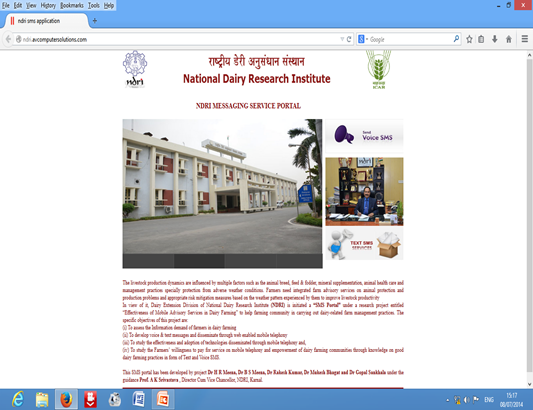
Figure: 1. Title page of the of NDRI messaging service portal
To move further in the portal one has to enter the message entry, farmers’ entry and send message showing in the menu of the portal.
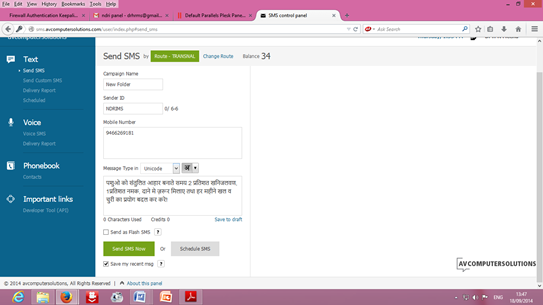
Figure: 2. Text Message entry , save and send box of the portal
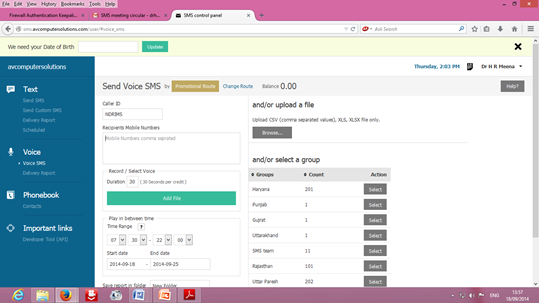
Figure:3. Voice Message entry , save and send box of the portal
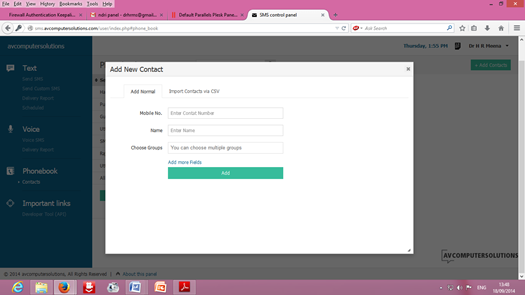
Figure: 4. Farmers/ client entry and save box of the portal
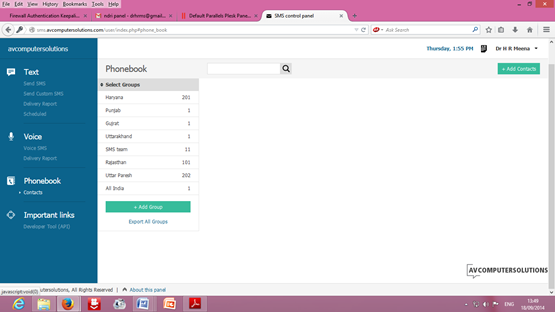
Figure: 5. Farmers/ client entry phonebook box of the portal
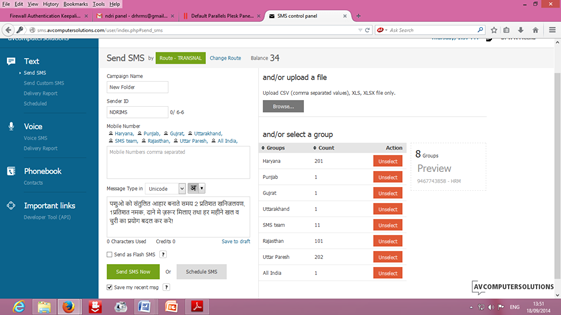
Figure: 6. Message send and farmers selection box of the portal
Mobile phone is emerging as an effective modern ICT tool in the agricultural extension service. An effective utilization of this ICT tool can improve farming communities and enable the speedy recommendation of requisite information in mobile based user friendly mode. The ability to access the information at the right time through any basic mobile phone saves time and cost of the farmer.
References:
1. NSSO (2005) Access to modern technology for farming, Report No 499(59/33/2), National Sample Survey Organization, Ministry of statistics and Program Implementation, Government of India.
2. Claire, J. Glendenning, S.B. and Kwadwo, A. (2010) Review of Agricultural Extension in India, Are Farmers’ Information Needs Being Met?, IFPRI Discussion Paper 01048.
3. Economist (2008) The Limits of Leapfrogging. http://www.economist.com/opinion/displaystory.cfm?
4. ICTFSECBP (2009) (Information Communication Technology for Small Enterprise Capacity Building Program). (2009). Final Report September 29, 2006 â€" September 28, 2009, USAID from the American People.
5. Jenny, C.A. (2011) Dial A for Agriculture: A Review of Information and Communication Technologies for Agricultural Extension in Developing Countries. CGD Working Paper 269, Washington, D.C.: Center for Global Development
6. Kameswari, V.L.V. (2011) ICTs for Agricultural Extension: A Study in the Indian Himalayan Region. Elect. J. Inform. Syst. Dev. 48(3):1-12.
7. Marcel, F. and Bart, M. (2012) Impact of SMS-Based Agricultural Information on Indian Farmers. The World Bank Economic Review, Published by Oxford University Press on behalf of the International Bank for Reconstruction and Development, pp. 1-32
8. Mruthunjaya, A. A. (2005) ICT for livelihood security: a reality check. Mainstreaming ICTs 2(2):14-18.
9. Richardson, D. (1996) The Internet and rural development: recommendations for strategy and activity â€" final report. Rome: Sustainable Development Department of the Food and Agriculture Organization of the United Nations.
10. Rivera, W.M. (1996) Agricultural extension in transition worldwide: Structural, financial and managerial strategies for improving agricultural extension. Public Admin. Dev. 16:151-161.
About Author / Additional Info:
I am currently working as Senior Scientist in Dairy Extension Division, ICAR-National Dairy Research Institute, Karnal-132001 Haryana (India). I have also worked with ICAR-Indian Veterinary Research Institute, Izatnagar-243122 Bareilly, Uttar Pradesh (India) as Scientists for 10 year. Also a recipient of the ICAR’s prestigious "The Swami Sahajanand Saraswati Outstanding Extension Scientist Award" in Social Science.